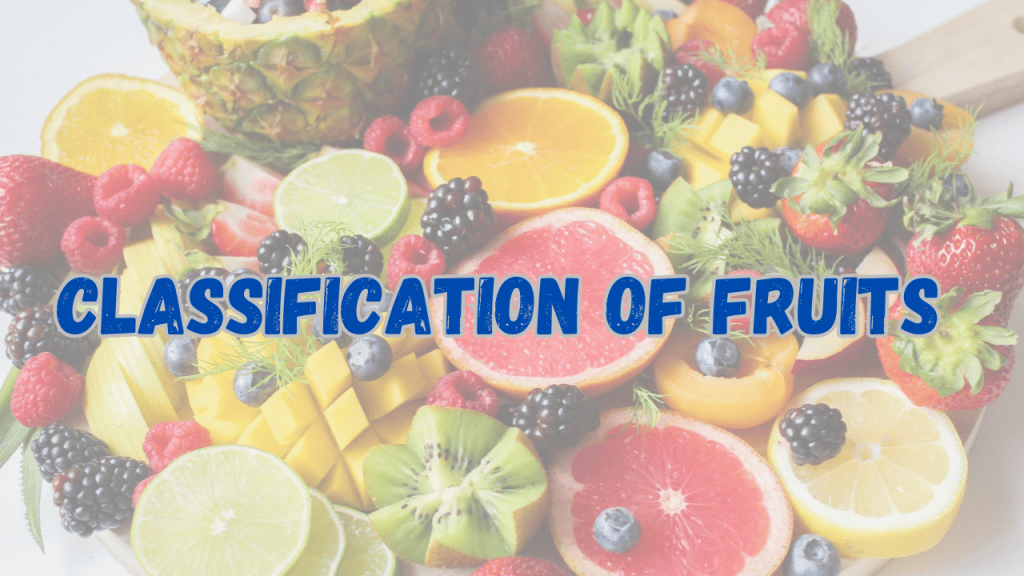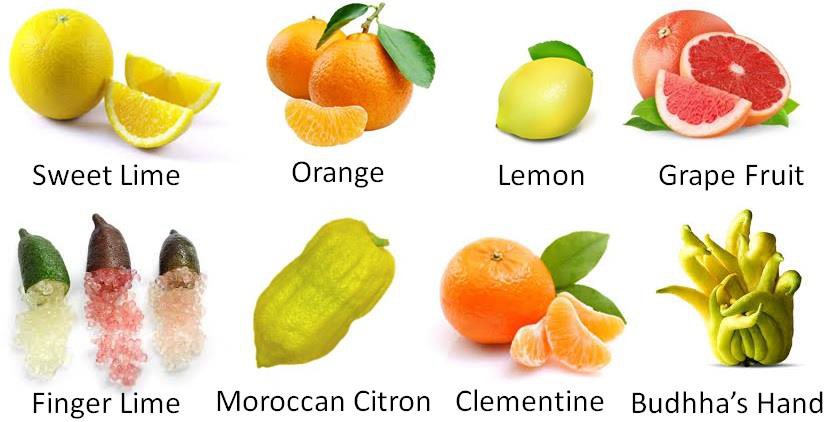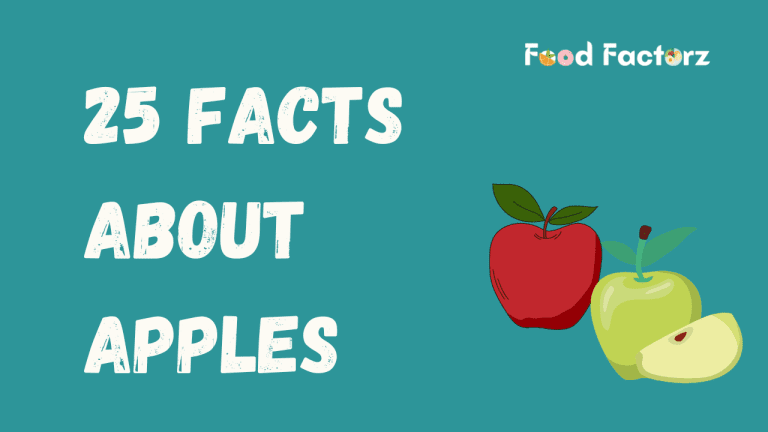Hi Foodies!!! Today we will be understanding how the classification of fruits can help you appreciate their unique qualities and use them better in your cooking.
“Nature gives us the gift of fruits, bursting with flavor and nutrients. Let’s savor them with gratitude and delight.”

Introduction
When it comes to preparing and eating fruits, there are a variety of classifications to take into account. While some fruits are better suited for baking or for preparing jams and preserves, others are better suited for munching on their own. Berries, citrus fruits, tropical fruits, stone fruits, and apples and pears are among the fruit groups. Each classification of fruits has a distinct flavor and texture that makes it appropriate for various foods and recipes. Make sure to choose fruits from the category that best suits your requirements and tastes when choosing fruits for your upcoming meal or snack.
Classification of Fruits
Fruits can be divided into the following categories depending on the context of their culinary prospects:
Pulpy Fruits
The first category under the classification of fruits is pulpy fruits. They are mostly hard in their raw form and become tender when they ripen. These fruits yield soft pulp of thick consistency when crushed. The pulp is often used in preparing desserts, cakes, tarts, pies, candies, ice creams, and smoothies.
For example, mango, papaya, banana, muskmelon, pineapple, custard apple, wood apple, mud apple, kiwi, fig, passion fruit, apple, pear, and plum.
Some pulpy fruits, such as fig and passion fruit, have small, soft seeds that bring crunchiness, but some fruits, like guava and wood apple, contain multiple small and hard seeds. Such seeds need to be separated while getting the pure pulp of the fruit.

Juicy Fruits
The second type under the classification of fruits is juicy fruit. These fruits give the juice a thin consistency when squeezed or crushed. The juice is strained to separate any small fruit particles left while crushing. The clear juice is then used for sorbets, mocktails, and organic-colored ice cubes. Juices are combined with corn syrup and sugar to prepare juice drinks and fruit nectars or nectar blends. These Juicy fruits are further divided into two parts Citrus fruits and non-citrus fruits
Citrus Fruits
These fruits are often divided into segments that contain small sacks filled with juice. Citrus fruits contain citric acid, a natural preservative that adds a sour taste to the sweet, ripened fruit. They have a leathery and colorful outer peel. Their peel (also called zest) has a strong aroma. The zest is often used in cuisines for presentation and in preparing marmalades. Some citrus fruits are shown below:

Non-Citrus fruits
They are non-acidic, alkaline fruits. Ripen non-citrus fruits taste sweeter than ripened citrus fruits. Here are some non-citrus fruits:

Dry Fruits
The third type under the classification of fruits is dry fruit. They are fruits with no water content. Their water is removed by either natural or artificial methods of drying. They shrink with a mild change in color after drying and have a longer shelf life than fresh fruits.
For example, raisins are made by drying good-quality grapes. Dried apricots, figs, kiwis, prunes, and dates are the most common varieties of dry fruits.
Dry fruits are used in ice creams and healthy milk-based cold drinks. They are best paired with chocolates and cakes. They are used in preparing desserts and the presentation of food.

Berries
The fourth type under the classification of fruits is berries. They are small, pulpy, and juicy fruits with bright, glossy peels. They are consumed worldwide. They can be eaten fresh or used in preparing tarts, pies, cakes, and candies. Some of them are used in preparing jams and sweet pickles.
Here are some berries:

Some of the tips to remember while buying fruits:
When buying fruit, it’s important to keep a few things in mind to ensure that you’re getting the best-quality produce. Here are seven easy and simple tips to remember:
- Check for ripeness. Choose fruits that are fully ripe or almost ripe. Overripe fruits may be too soft or have a mushy texture.
- Select seasonal and local fruits. Choosing fruits that are in season and grown locally can ensure that they are fresh and flavorful.
- Avoid fruits with bruises or blemishes. These can be a sign of damage or spoilage and may affect the quality of the fruit.
- Opt for organic produce whenever possible. Organic fruits have been grown without the use of harmful pesticides or chemicals, which can be better for your health and the environment.
- Look for color and texture. The color and texture of a fruit can be good indicators of its freshness. Choose fruits that are bright and vibrant in color and have a firm texture.
- Smell the fruit. Fruits with a sweet, fresh smell are likely to be ripe and delicious. Avoid fruits that have a sour or musty smell.
- Store your fruits correctly. Keep your fruits in a cool, dry place, away from direct sunlight. This can help preserve their freshness and flavor for longer.
Conclusion
In conclusion, understanding the classification of fruits can go a long way in helping you make informed decisions when buying and consuming fruits. From knowing the different types of fruits to understanding the nutritional benefits they offer, it’s essential to keep these tips in mind. So, the next time you go fruit shopping, remember to buy a variety of fruits to ensure you get all the necessary nutrients. As the saying goes, “An apple a day keeps the doctor away,” so make sure you incorporate fruits into your daily diet for a healthier lifestyle.
We always encourage our readers to share their ideas and knowledge about fruits or other classification of fruits based on their knowledge. Please feel free to leave a comment below with any additional insights or suggestions on this topic. We look forward to hearing from you!
Happy fruit shopping!

